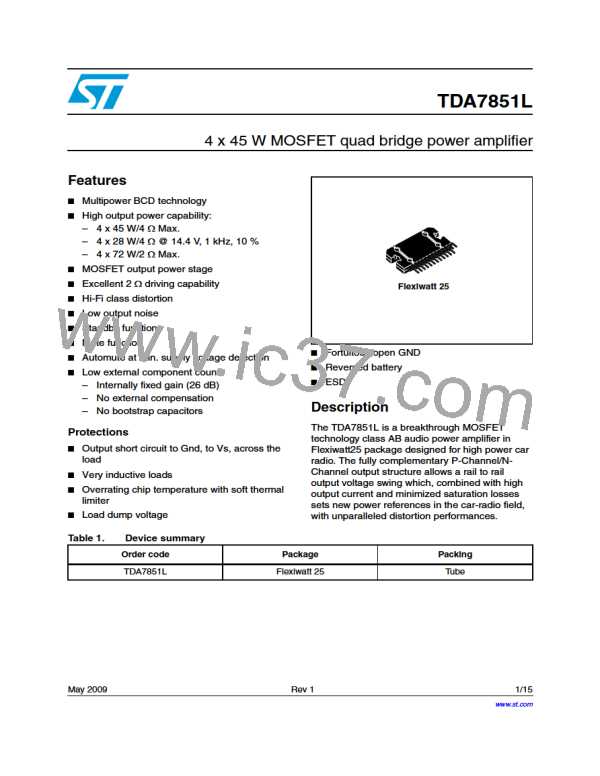Application hints
TDA7851L
4
Application hints
4.1
SVR
Besides its contribution to the ripple rejection, the SVR capacitor governs the turn ON/OFF
time sequence and, consequently, plays an essential role in the pop optimization during
ON/OFF transients. To conveniently serve both needs, its minimum recommended value
is 10µF.
4.2
4.3
Input stage
The TDA7851L's inputs are ground-compatible and can stand very high input signals
( 8 Vpk) without any performances degradation.
If the standard value for the input capacitors (0.1µF) is adopted, the low frequency cut-off
will amount to 16 Hz.
The input capacitors should be 1/4 of the capacitor connected to AC-GND pin for optimum
pop performances.
Standby and muting
Standby and muting facilities are both CMOS-compatible. In absence of true CMOS ports or
microprocessors, a direct connection to Vs of these two pins is admissible but a 470 kΩ
equivalent resistance should present between the power supply and the muting and stand-
by pins.
R-C cells have always to be used in order to smooth down the transitions for preventing any
audible transient noises.
About the standby, the time constant to be assigned in order to obtain a virtually pop-free
transition has to be slower than 2.5 V/ms.
4.4
Heatsink definition
Under normal usage (4 Ω speakers) the heatsink's thermal requirements have to be
deduced from Figure 16, which reports the simulated power dissipation when real
music/speech programmes are played out. Noise with gaussian-distributed amplitude was
employed for this simulation. Based on that, frequent clipping occurrence (worst-case) will
cause P
= 26 W. Assuming Tamb = 70° C and TCHIP = 150 °C as boundary conditions, the
diss
heatsink's thermal resistance should be approximately 2 °C/W. This would avoid any
thermal shutdown occurrence even after long-term and full-volume operation.
12/15
Rev 1

 ETC [ ETC ]
ETC [ ETC ]